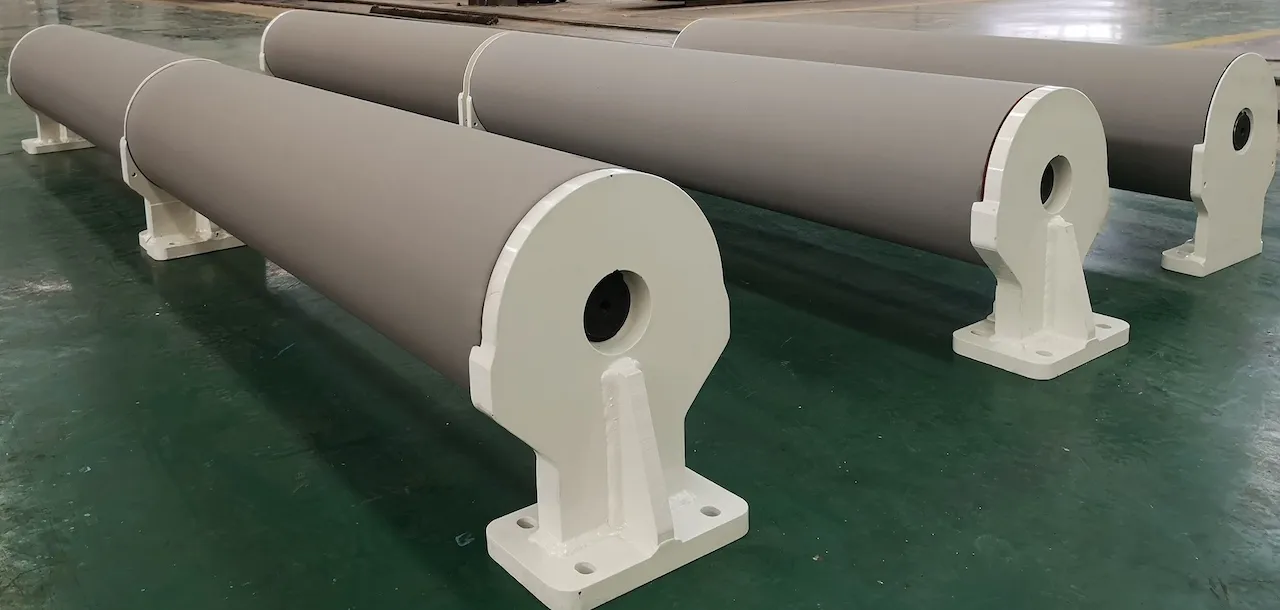Stone rolls, integral components in industries ranging from paper production to food processing, demand meticulous care and regular inspection to maintain peak performance. Their consistent operation is crucial for productivity, and a proactive approach to maintenance, beginning with thorough inspection, is the key to preventing costly downtime and ensuring a smooth operational flow. Ignoring even minor wear can lead to significant problems down the line, impacting product quality and overall efficiency.
Understanding the importance of stone roll inspection involves recognizing the diverse roles these rolls play. From calendering and embossing to grinding and crushing, the specific application dictates the type of wear and tear a roll experiences. This, in turn, informs the inspection process, highlighting the areas that require the most attention. For instance, a stone roll used in paper production will experience different stresses than one used in food processing, necessitating tailored inspection procedures.
Visual Inspection: The First Line of Defense
A comprehensive stone roll inspection begins with a thorough visual examination. This involves carefully scrutinizing the roll's surface for any visible signs of damage, such as cracks, chips, or uneven wear. Look closely for any discoloration or pitting, which could indicate underlying material fatigue. Remember, even seemingly superficial imperfections can compromise performance and should be addressed promptly.
Don't just focus on the roll's surface; examine the supporting structure as well. Check bearings for smooth rotation and listen for any unusual noises, which might suggest wear or misalignment. Inspect the frame for any cracks or signs of stress, ensuring the entire assembly is structurally sound.
Dimensional Inspection: Maintaining Precision
Dimensional inspection, using tools like calipers and micrometers, is crucial for verifying the roll's dimensions remain within acceptable tolerances. This includes measuring the roll's diameter, length, and roundness. Deviations from the specified dimensions can negatively affect the final product, particularly in applications requiring precise tolerances, like paper calendering.
Maintaining precise dimensions ensures consistent performance and product quality. Regular dimensional checks can also help identify potential problems early on, allowing for timely corrective action and minimizing downtime.
Hardness Testing: Evaluating Material Integrity
Hardness testing assesses the roll's resistance to indentation, providing valuable insights into the material's integrity. This is particularly important for rolls used in abrasive applications, where maintaining surface hardness is essential for longevity and consistent performance. Several methods, like Rockwell or Vickers hardness tests, can be employed to accurately determine the roll's hardness.
Changes in hardness can indicate material fatigue or degradation, signaling the need for maintenance or replacement. Regular hardness testing, coupled with visual and dimensional inspections, forms a comprehensive approach to ensuring peak stone roll performance.
Non-Destructive Testing (NDT): Delving Deeper
In some cases, more advanced inspection techniques, like ultrasonic testing or magnetic particle inspection, are necessary to detect subsurface flaws that might not be visible to the naked eye. These non-destructive testing methods can reveal hidden cracks, voids, or other internal imperfections that could compromise the roll's structural integrity.
While NDT may not be required for every inspection, it can be invaluable in critical applications where roll failure could have significant consequences. Think about the potential cost of a production line shutdown – investing in comprehensive inspection techniques can save substantial resources in the long run.
Developing an Inspection Schedule: A Proactive Approach
Establishing a regular inspection schedule is fundamental to maintaining optimal stone roll performance. The frequency of inspections should be determined based on the roll's application, operating conditions, and historical performance data. High-stress applications will naturally require more frequent inspections than less demanding ones.
Consider incorporating both routine visual inspections and more detailed periodic checks, including dimensional and hardness testing. This layered approach ensures both immediate and long-term performance optimization. How often do you think your specific application warrants a thorough inspection?
Documenting Findings: Building a Maintenance History
Meticulous documentation of inspection findings is essential for tracking the roll's condition over time. This creates a valuable maintenance history, which can be used to identify trends, predict potential problems, and optimize maintenance strategies. Detailed records also facilitate informed decision-making regarding repairs or replacements.
By documenting each inspection, you build a comprehensive picture of the roll's health, enabling proactive maintenance and maximizing its lifespan. This information is invaluable for preventing unexpected downtime and ensuring consistent performance.
Conclusion: The Path to Peak Performance
Stone roll inspection is not merely a maintenance task; it's a strategic investment in ensuring consistent performance and maximizing the lifespan of these critical components. From visual assessments to advanced non-destructive testing, a comprehensive inspection regimen is the cornerstone of a proactive maintenance strategy. By prioritizing regular inspections and meticulous documentation, you pave the way for peak performance and operational efficiency, minimizing downtime and maximizing productivity.



